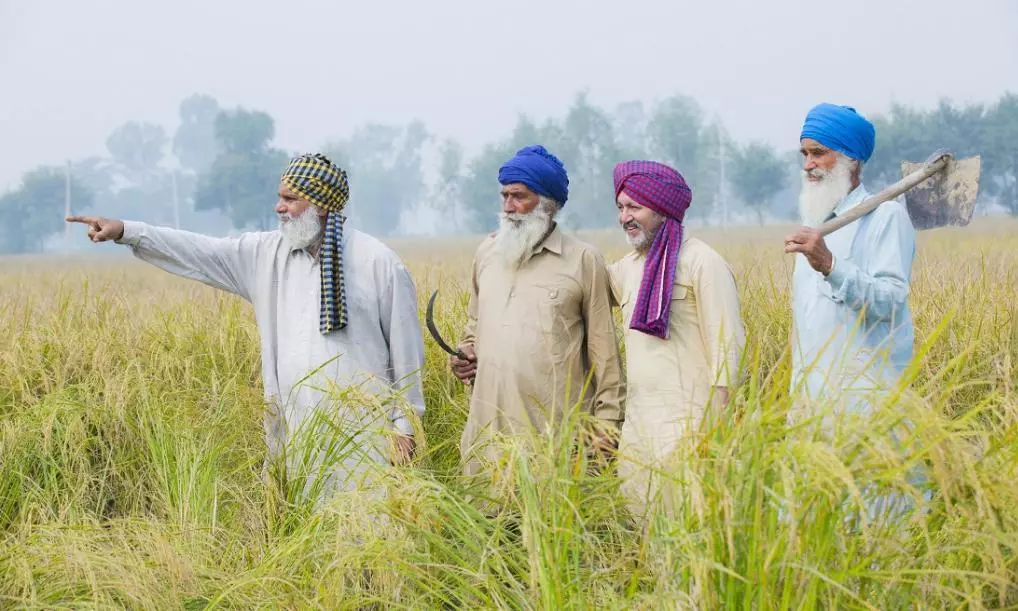NGT Directs Punjab Govt to Revise Stubble Burning Action Plan
National Green Tribunal emphasizes meticulous monitoring and comprehensive action against stubble burning.

The NGT recommended use of satellite images, drone surveys and physical mapping by August- September to evaluate agricultural farm area, identifying the extent of stubble generated through unique IDs given to each farm. This can be fulfilled easily through scientists and engineers by high-quality new universities like Plaksha University in Mohali, technology giants like Google, satellite companies with sustainability missions like Planet, public satellite agencies like NASA and ISRO, and an ecosystem of drone companies.
The NGT has parallelly recommended that agencies be used for in situ or ex situ processing, using eco-friendly technologies including bio-digestion, composting, fodder, briquetting, pelleting and the bio-decomposer approach mapping their areas of planned implementation to real action. This is far more critical. While intense monitoring at source is necessary to continually map the extent of the crisis that north India reels under, it is equally necessary to reuse stubble waste and incentivise alternates to simply setting farms on fire.
There are three ways in which parali can be used as fuel i.e. gaseous fuels (biogas & bioCNG), liquid fuels (2G ethanol) and solid fuels (pellets & briquettes). Biogas involves high setup costs, has challenges in managing organic voluminous by-products, and requires operational excellence to make a high rate of return. Verbio’s model in Sangrur runs far below capacity and Meerut’s Circle experiment is yet to bear fruit. 2G ethanol from rice straw has currently a lower technological readiness than other fuel solutions and its path to adoption lies in industrial research between NIBE Kapurthala and large business groups from Punjab. Thus, the bulk of Punjab’s ex-situ management solutions for parali will come from briquettes & pellets which can be used in brick kilns, captive power plants and non-captive thermal power plants. With the rapid increase in coal prices from April 2021 to April 2023 (G16 coal rose 7 times in price), parali may become an inevitable choice for energy users and producers.
Interestingly, parali has a GCV similar to that of domestic coal (14-15 MJ/kg), is economically feasible and sells for only around Rs. 1.7 to Rs. 2/kg at farms, though currently the collector makes the money not the tiller or farmer. It can be utilized in 10-15 large thermal power plants in Punjab and Haryana, which may take care of 30% of the total parali generated. Its scientific and technical feasibility has been proven by firing done at Sterlite, L&T, NTPC and Punjab State Council of Science and Technology. Further, Punjab has 11 biomass power plants with a total capacity of 97.50 megawatts, consuming 880,000 metric tonnes of paddy straw every year.
However, its widespread adoption is nowhere near the capacity of these thermal power plants. It’s estimated to stand at 0.001% of the capacity they can adopt. Today, despite a win-win solution right before our eyes, these plants are either facing undersupply of parali-based fuels due to pricing and procurement model mistakes or no punitive damages for non-compliance or facing operational challenges along with stiff competition from solar and wind energy due to issues at PSPCL, PEDA and PPCB which are hamstrung by lack of policy coordination, competition from cheap mega projects, and terms of contracts with the Power Finance Corporation with the Government of India. If coal is subsidized by the Railways and cheap global debt subsidizes large solar projects, there is a need to identify and collaborate with whoever will transport and finance parali to value creation projects. CSR should also be unlocked to incentivize Punjabi businesses to increase uptake as a sign of goodwill.
The commercial viability and operational feasibility are now upon the power regulator and the private sector. Given the coal prices abroad and domestic production prices today, it would make sense to substitute a portion of their fuel with parali—in fact a mandate by the national power ministry for thermal power plants to use 10% biomass for power production is already in place. The practical implementation of this theory is hindered largely by awareness and logistical barriers. With government support or self-organization through block-level contacts, enhanced use of baler and raker machines, and local body (panchayats) assessments guided by defined quality metrics, this can become a widespread state practice.
We must remember that India traditionally relied on biomass for its energy needs. Wood, bushes, straws and cow dung were consistently used to power household earthen stoves and even small furnaces. The problem with them was pollution control, which in a day and age of efficient combustion, is much less of a problem. Today, biomass is what can get India to achieve its target of net-zero emissions by 2070 and is coming back into vogue due to the consequences of the Russia-Ukraine war.
The Punjab Government can turn this judicial order and stubble burning crisis into an opportunity to map farms and revenue records across Punjab in a quick and efficient manner, link incentives ordered by Supreme Court directly to the bank accounts of farmers whose farms don’t have fires in a season (through 2 or 3 payments, before-during-after the winter crop sowing season) and also conducting compliance directed by the court. This will also help correct the ground reality of farmers not getting a single rupee from their waste, whose gains are mostly taken by collectors or industrial users. And while the government is responsible for convening this implementation, the onus lies on progressive and mature citizens to step up and collaborate with the government, and use this brief policy window to implement progressive governance action.
Roshan Shankar is a Stanford alumnus and Founder & CEO of Saroja Earth, a Punjab based start-up committed to enable sustainable solutions with stubble waste.
Seerat Kaur is a Chandigarh-based research communication fellow at Saroja Earth, and has degrees in supply chain management and economics from Universities of Warwick and Nottingham.

